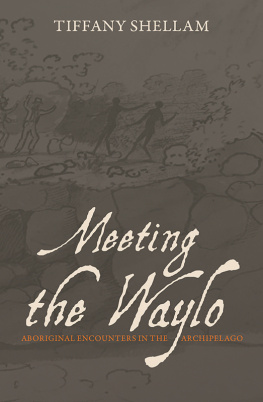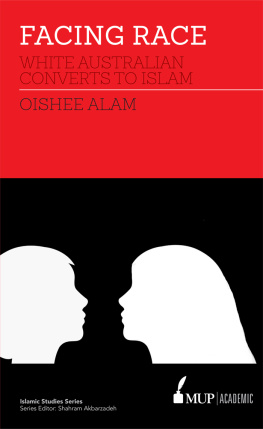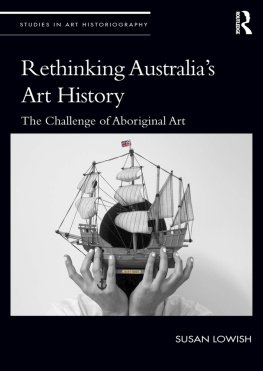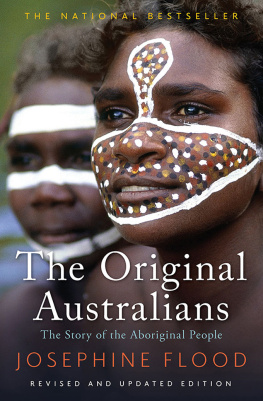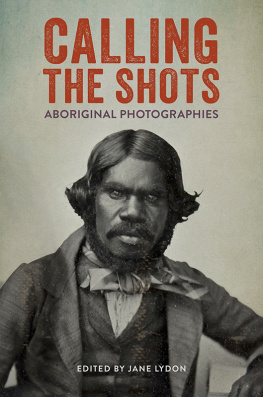IMAGINED DESTINIES
IMAGINED DESTINIES
Aboriginal Australians and the
Doomed Race Theory, 18801939
Russell McGregor
MELBOURNE UNIVERSITY PRESS
Melbourne University Press
PO Box 278, Carlton South, Victoria 3053, Australia
First published 1997
Text Russell McGregor 1997
Design and typography c Melbourne University Press 1997
This book is copyright. Apart from any use permitted under the Copyright Act 1968 and subsequent amendments, no part may be reproduced, stored in a retrieval system or transmitted by any means or process whatsoever without the prior written permission of the publisher.
Typeset by Syarikat Seng Teik Sdn. Bhd. in 10/13 pt Sabon
Printed in Malaysia by SRM Production Services Sdn. Bhd.
National Library of Australia Cataloguing-in-Publication entry
McGregor, Russell, 1955-
Imagined destinies: Aboriginal Australians and the doomed race theory, 18801939.
Bibliography.
Includes index.
ISBN 0 522 84762 5.
1. Aborigines, AustralianTreatmentHistory. 2. Aborigines.
AustralianGovernment relations. 3. AustraliaRace relations
History. I. Title.
306.0899915
Preface
For the greater part of the past two hundred years, white Australians believed the indigenous inhabitants doomed to extinction. It was not that extinction was considered possible, or probable, or contingent upon certain courses of action; nor was it merely that Aboriginal numbers were observed to be declining. Extinction was regarded as the Aboriginals inescapable destiny, decreed by God or by nature.
This idea took root in Australia in the early decades of the nineteenth century, flourishing in its latter years and in the early twentieth century. By the period between the two world wars, the doomed race idea was showing signs of withering, although it persisted, albeit with declining vigour, until at least the 1950s. Throughout these years, the expectation of extinction exerted a powerful influence over white Australian attitudes toward, and interactions with, the Aboriginals. Even as it declined, the doomed race theory cast a long shadow over the newly-emerging proposals for securing an Aboriginal future.
In this book I explore the doomed race concept, its intellectual underpinnings and its eventual undermining. White Australians' assurance of the Aboriginal demise derived not so much from knowledge of demographic trends as from suppositions that had become firmly entrenched in the Western imagination since the Enlightenment of the eighteenth century. In particular, it was the entanglement of the idea of progress with the concept of race that lent credibility to the prediction of inevitable extinction. The prediction gradually lost credibility as the concepts of race and progress were hesitantly and tentatively disentangled.
This book traces the changing renditions of these ideas in the writings of scientists, humanitarian reformers, missionaries, administrators and others who made public comment on the destiny of the Aboriginals. Consideration of administrative matters is confined largely to a single jurisdiction, the Northern Territory, although some attention is given to the status of Aboriginals within the broader parameters of Commonwealth legislation. Temporally, the study covers the period from 1880 to 1939. The former date marks not the beginnings of the doomed race theory but its consolidation, by the evolutionary science of the late nineteenth century. The latter date marks the beginning of World War II, the repercussions of which were to upset long-established assumptions about the significance of race. For this reason, and because by 1939 the inevitability of extinction was as much contested as conceded, it is a convenient year at which to conclude.
Many of the ideas and assumptions I examine are today regarded as not merely wrong but also reprehensible. However, since my purpose is to explicate these ideas within their social and cultural contexts, I have refrained from pronouncing on their morality or correctness. The doomed race concept once exerted a pervasive influence over relations between black and white Australians; it seems more appropriate now to elucidate the meanings and significance of that concept than to condemn its evident shortcomings. Explication and elucidation have problems of their own, for ambiguity, ambivalence, incoherence and contradiction pervade white Australian discourses on the Aboriginals. Yet the ambiguities were as important as the affirmations, the equivocations as significant as the definitive declarations. The breakdown of the doomed race theory was slow, hesitant and faltering; and as it declined new problems and fears arose in the imaginations of white Australians.
The endeavour to understand the past in terms of the ideas and assumptions then current necessitates use of the terminology of the past. Words such as 'progress', 'primitive', 'civilisation', 'savagery', 'advanced', 'backward', 'uplift' and 'degeneration' appear frequently in this work, along with the terms 'half-caste', 'full-blood', 'part-Aboriginal' and 'mixed-blood'. These words are not enclosed within quotation marks except in quotation or, as in the preceding sentence, where the words themselves rather than their conceptual referents are the issues under consideration. Lack of quotation marks in no way indicates endorsement of the conceptual world to which such terms pertained.
In all quoted passages, emphasesitalics, upper-case lettering and so forthreplicate those in the original documents.
I have made no attempt to force the vocabulary of non-sexist language into explications of the various texts, as it seems inappropriately anachronistic to impose the sensitivities of the late twentieth century upon writings from a different age. Since Darwin wrote of the 'descent of man', I too refer to 'man' in discussing his ideas.
The spelling of Aboriginal words has not been standardised or modernised; instead, I use whatever spelling was adopted by the writer under discussion. Thus in a group now conventionally designated the Warlpiri is rendered the Wailbri, following the usage of the anthropologist under consideration, Olive Pink.
This book is not a history of Aboriginal Australians; it is a history of textual representations of Aboriginals. It begins with a Prologue, which sketches out the origins of the doomed race theory in the early colonial period. the focus shifts to the administration of Aboriginal affairs in the Northern Territory, suggesting that contemporary protectionist policies offered a glimmer of hope for the survival of the race. The centrepiece of this chapter is an analysis of the writings of the eminent evolutionary anthropologist, Walter Baldwin Spencer, in his role as Chief Protector of Aborigines in the Northern Territory in 1912.
Chapter 3 sketches out three themes that are examined more thoroughly in the following chapters: the changing orientation of anthropology in the years after World War I; the gradual decline of certainty in the Aboriginal demise; and the marked rise in the level of concern over persons of mixed descent. In . Although the doom of the race appeared less certain by the 1930s, there was no unanimity on how survival could best be ensured or on the place of the survivors in the Australian nation. The doomed race theory was itself heading toward extinction; in the process, the Aboriginal destiny became increasingly a matter of dispute.


